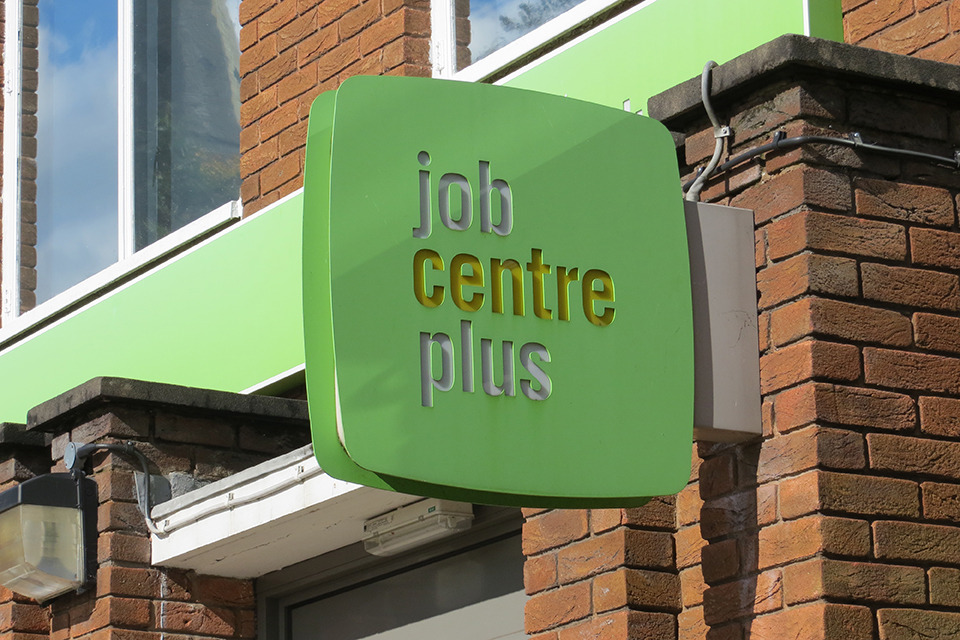Daljit Rehal tells PublicTechnology about his priorities for the tax agency’s digital services and its programme to reform billions of pounds of tech procurement
HMRC headquarters in central London Credit: Gary Todd/Public domain
September 2020 was surely a strange and difficult time to start any job, let alone one as complex and consequential as the role of chief digital and information officer of HM Revenue and Customs.
Daljit Rehal arrived in post at HMRC six months ago at roughly the mid-point of a 10-year transformation programme designed to create “a tax authority fit for the future”. This reform agenda involves not just relocating the department’s 64,000 staff to 13 regional hubs around the country, but also revamping the processes by which more than £600bn in tax revenue is collected each year.
The Making Tax Digital programme has already been implemented for the VAT returns of companies with turnover in excess of £85,000, and the scheme will be extended over the next two years to include all businesses and individuals paying income tax on annual freelance or property earnings of more than £10,000.
On top of this ongoing transformation work, in the last year HMRC has also played a key role in supporting coronavirus response – particularly in its rapid delivery of major digital platforms and services. These have included online tools for businesses using the furlough scheme, as well as for self-employed people registering for financial support.
We’re moving away from bigger contracts that carry risks to service continuity when they end
But the demands of the last year have also exposed the need for the tax agency’s IT estate to be transformed; a report from the Public Accounts Committee found that, since the start of the pandemic, maintenance work needed to support legacy IT infrastructure has cost HMRC £53.2m – equating to 80% of the total additional costs incurred as a result of coronavirus.
To help support the necessary updates, £268m was awarded to HMRC during the November spending review to “fix outdated IT”.
The department’s Technology Sourcing Programme – which aims to revamp how it procures £900m of IT goods and services each year – will be central to reducing the tax agency’s technical debt.
The scheme will be “focused on disaggregating the technology supply chain to deliver value for money, improve competition and reduce risk in the IT estate”. BT, Accenture, Capgemini and KCOM all have major deals with HMRC that are nearing their end, and the procurement overhaul aims put in place new delivery arrangements in place by the end of June 2022.
PublicTechnology asked Rehal about his plans for the future of the tax agency’s technology infrastructure, as well as its ongoing digital transformation of citizen services, and the extent to which it needs to work with other departments.
PublicTechnology: What are the priorities for HMRC’s IT and tech estate over the coming year?
Daljit Rehal (pictured below right): HMRC has a large and complex IT estate and my first priority is always to protect the live services for our customers and colleagues. Another of my early priorities has been to make sure we have a clear vision of where we want to get to with our technology and understand how we will get there. Working with my senior team, I’ve spent some time refreshing our IT and data strategies. These focus on how we’ll move to a smaller number of better-supported platforms, and how we’ll make sure they can support all the things HMRC needs to do and are governed in a disciplined way. This is a journey that we’ll measure in years, not in months. But I want leaders across HMRC’s technology function to be able to make decisions with our vision in mind and be thinking about everything they do and whether it’s moving us in the right direction.
 How important is migrating from legacy technology, and is there a programmatic plan to do so?
How important is migrating from legacy technology, and is there a programmatic plan to do so?
HMRC has come a long way over recent years and has much to be proud of in terms of how we’ve shifted services online as part of government’s wider digital agenda. But our IT estate is not as resilient, flexible and modern as it needs to be to support core HMRC services.
We’ve work underway to address this, with both short-term and long-term goals. Cloud is a key area of focus for us, and we’re leading the way on cloud adoption in government. Shifting services to large-scale, public cloud is enabling us to build and run more resilient services, update them easily where we need to, and scale up quickly at peak times of the year. In 2020 we successfully moved our tax and finance/HR platform to cloud hosting – one of the largest estates of its kind in Europe – and will continue to build on this success with further migrations planned this year.
What are the department’s ambitions for digital services over the coming year?
Many of the IT solutions we’ve delivered over the last year were vital to the nation, including the solutions for the chancellor’s Covid relief schemes and work done to support EU transition. The way we delivered them, and the speed we were able to deliver them at, gave us a glimpse of what we’re truly capable of. We’ve been looking at what we can learn and take forward from this exceptional period – particularly around configuring change and looking at new ways of operating effectively.
What are HMRC’s goals for the use of data? And to what extent does that involve sharing data with other departments?
We hold a huge amount of data and take our responsibilities for looking after it very seriously. A key goal is to develop more insight from large volumes of data and make the value in the data accessible to our business experts faster. This will help us to continue to improve the services we offer and work in more efficient ways.
We do share taxpayer data with other organisations but only where the law allows, under strict controls, and in line with our published privacy notice. This would be to support outcomes like combating fraud in the welfare or benefits systems, development of new cross-cutting government policies or providing insight into government operations. We also support access to redacted, or encrypted, data by external researchers and other government departments for approved research projects that meet specific legal requirements.
£900m
Annual tech procurement spend that comes under the scope of the Technology Sourcing Programme
June 2022
Deadline for implementing new contracts to replace outgoing deals
64,000
Approximate number of HMRC staff
Two days
Amount of homeworking that employees will be entitled to in new HMRC contract
£53.2m
Cost of maintaining legacy IT during pandemic
What was the genesis for the Technology Sourcing Programme to reform the procure and delivery of IT?
We faced a situation where a large number of our IT service supply contracts needed to be replaced and, in 2019, we began taking stock of our IT requirements right across our estate. From there, we’ve developed a plan for how to break those up into the right packages of work, and the order in which to take them to market.
We’re moving away from bigger contracts that carry risks to service continuity when they end. Instead, we’ll continuously test the market to drive improvement and ensure we’re getting the best deals and utilising the latest technology. This represents an exciting step change in the way we work with our technology partners. We are excited to work with existing and new partners to build this future.
Where does the programme begin, and what is the rough timeline?
The programme is well underway. Over the next 18 months, we’ll launch a number of procurements putting in place new commercial arrangements to replace expiring contracts. We’ll be launching procurements in a series of groups. Procurements in the first group include: the procurement of a cloud operating system, launched in November 2020; and competitions for data and analytics, and wide area network services commenced early this year.
To be aware of opportunities, we’d recommend that suppliers register at the opportunity publication portals on Contracts Finder and Tenders Electronic Daily, as well as set preferences for HMRC and Technology Sourcing Programme-related services.
HMRC has come a long way over recent years in terms of how we’ve shifted services online… but our IT estate is not as resilient, flexible and modern as it needs to be to support core services
What, ultimately, is the goal of the programme?
For HMRC to keep pace with the changing needs and expectations of our customers, we need to make the most of every ounce of our technology and have access to the very latest innovation. Our goal is to help HMRC move towards true technology wealth. We know we can’t do that on our own. We believe we have some unique opportunities for partners to work with us to deploy solutions on a scale that dwarfs most organisations, and use technology in new ways to improve the experience of our customers and colleagues. We want to be the best at what we do, and that means working with the best technology partners – big, small and everything in between.
What will be the mid- to long-term benefits of the programme?
We are opening up our IT supply chain, and bringing about a step change in the way that we work with partners. This will help us to protect key live services, modernise our IT estate, get the best deals for the taxpayer, and give us better access to new technology as it comes along.



